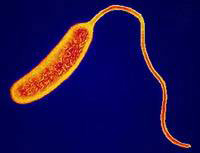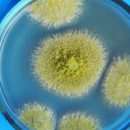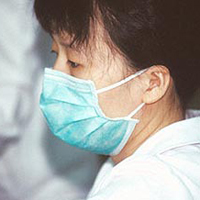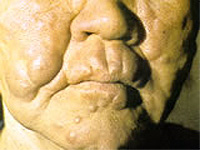Cholera is a sharp disease that occurs with intensive reproduction in the lumen of the small intestine of the pathogen. The causative agent cholera is cholera vibrion. The source of cholera vibrines is only a person, the greatest danger represents persons with severe disease.
Content
Cholera - a sharp disease resulting from stormy reproduction in the lumen of the small intestine of the pathogen - choler Vibrio. Cholera is characterized by the development of massive diarrhea with rapid loss of liquid and electoralolites, in severe cases of hypovolemic (dehydration) shock and acute renal failure. Cholera refers to quarantine infections capable of epidemic distribution.
Features of the causative agent cholera
Cholera causative - Vibrio cholerae - is a short curved sticks (1.5-3 μm long and 0.2-0.6 μm wide), having a polar arranged harness, which causes them sharply pronounced mobility. Cholera vibrio dispute and capsules does not forms. Vibrins are very sensitive to acids. Dilute gelatin form indole.
The source of cholera vibrions is only a person. The most intensive dispersion of infection is observed around patients with a severe form of cholera suffering from strong diarrhea and multiple vomiting. In the acute stage of the disease in 1 ml of liquid feces, a sick cholera highlights up to 105-107 Vibrions. A certain epidemiological hazard represent vibrionosuses, patients with a light (erased) form that make up the main group of infected people who are often not accessible to medical care, but closely communicating with healthy people.
Holor Property Fecal and oral infection transmission mechanism. The emergence of most epidemics is clearly associated with a water factor, but direct pollution of food with infected faces also contributes to the spread of disease in domestic conditions. Cholera propagates with greater ease than other intestinal infections. It contributes to the early massive selection of the pathogen with the feces and vomit masses that do not smell and color, as a result of which the surrounding disappears natural dishes and the desire to quickly clear the contaminated items. As a result, conditions are created to enter cholera vibions in food and water.
Conditions for the occurrence of cholera
 Low sanitary level is the main condition for the infection of cholera, especially during wars, natural disasters and catastrophes, when the sanitary and hygienic conditions of placement, production activities, water supply and nutrition of people are sharply deteriorating, the activity of mechanisms and transmission paths of intestinal infections increases. The dimensions of the epidemic flash are determined by the breadth of use of infected water sources, as well as the degree of their pollution by sewage discharges. Especially large epidemics are observed when submitting to the population of undegraved water using a water supply system and with accidents in the network as a result of a pressure drop and supply in soil water pipes. Domestic (contact) and food epidemic are not excluded. In the external environment, in particular on food, vibrios survive 2-5 days, on tomatoes and watermelons with sunlight, the vibriums die after 8 hours. It is also possible to infection through fish, crayfish, shrimp, oysters caught in contaminated water bodies and not undergoing due heat treatment.
Low sanitary level is the main condition for the infection of cholera, especially during wars, natural disasters and catastrophes, when the sanitary and hygienic conditions of placement, production activities, water supply and nutrition of people are sharply deteriorating, the activity of mechanisms and transmission paths of intestinal infections increases. The dimensions of the epidemic flash are determined by the breadth of use of infected water sources, as well as the degree of their pollution by sewage discharges. Especially large epidemics are observed when submitting to the population of undegraved water using a water supply system and with accidents in the network as a result of a pressure drop and supply in soil water pipes. Domestic (contact) and food epidemic are not excluded. In the external environment, in particular on food, vibrios survive 2-5 days, on tomatoes and watermelons with sunlight, the vibriums die after 8 hours. It is also possible to infection through fish, crayfish, shrimp, oysters caught in contaminated water bodies and not undergoing due heat treatment.
Very long, the vibrions survive in open water bodies in which the sewer, bath laundry water flows and when water warms over 17°WITH.
Currently the most common cholera caused by Vibrion El Tor. Its features are the possibility of prolonged vibrine and a large frequency of erased disease forms, as well as the high stability of the pathogen in the external environment compared with the classic biological version of the cholera vibrine. If you have about 20% of the total number of patients with a classic cholera from a classic cholem, then it is 50% at cholera El Tore. In endemic countries, the cholera is striking mainly children in the age group of 1-5 years. However, when the disease applies to the areas previously free from it, the incidence of the same among adults and children.
In a small number of elderly people who suffered cholera, there is a formation of the state of chronic carrier of the pathogen in the gallbladder.
People's susceptibility in humans are high, however, individual characteristics of a person, such as relative or absolute ahlorohydria (decrease in the acidity of gastric juice), also play an important role in susceptibility and infection. After the suffering of the disease, with a favorable course of the infectious process, immunity is produced in the body of persistent. He is short - repeated cases of cholera disease are observed after 3-6 months. Until now, the causes of annual cholera epidemics in Delta Ganga, periodic outbreaks in the rest of the Asian regions and Latin America, as well as the arising from time to the Global Pandemic.









